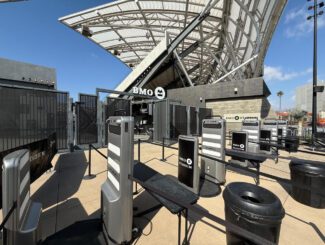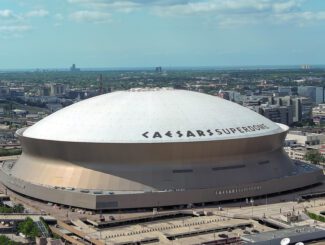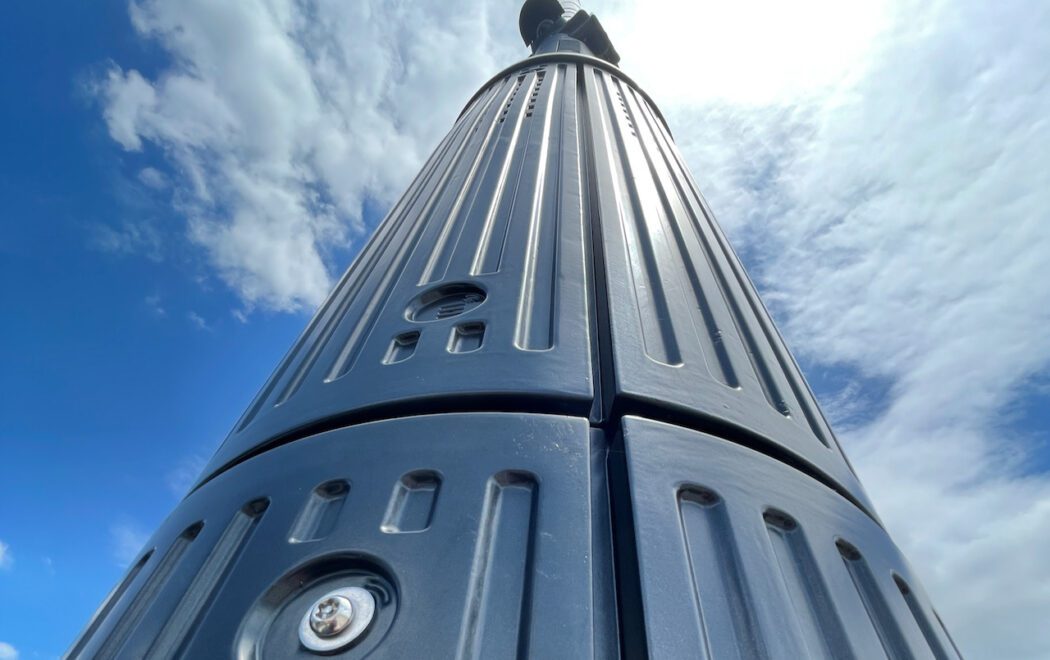
If providing technology inside a stadium is an accepted idea, bringing more technology to the spaces just outside stadiums — mainly parking lots — is still a work in progress.
While venues have tried different types of one-off integrations, like attaching Wi-Fi or cellular antennas to existing light poles, some new offerings are coalescing around the idea of a “smart pole.” The smart pole is a structure designed from the start to be aesthetically pleasing as well as modular and expandable. Designed as more than a light pole, smart poles are able to support a wide range of technologies including wireless connectivity, cameras, microphones, weather sensors, smart lighting and even electric-vehicle car-charging ports.
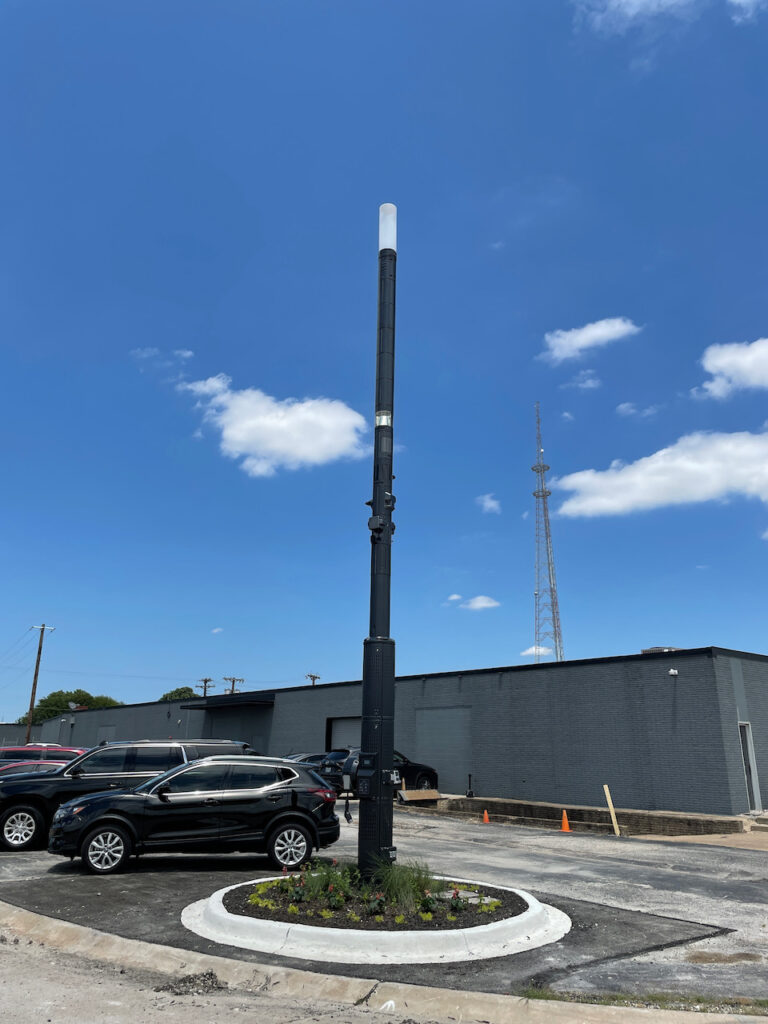
Ahead of this year’s Super Bowl, Verizon helped fund the deployment of a number of smart-pole systems outside Raymond James Stadium in Tampa. Manufactured by a company called ConcealFab, the poles were mainly targeted at providing a base for a range of wireless antennas. Another smart pole manufacturer is ENE.HUB. Stadium technology integrator AmpThink has installed one of the ENE.HUB Smart.Nodes at its Garland, Texas, headquarters to trial its capabilities.
Owned now by Brookfield Infrastructure Partners, ENE.HUB is originally an Australian company that develops smart poles that are highly modular and support an impressive volume of technology.
As part of a partnership with Brookfield, the AmpThink installation had to address the same requirements venues and other public places need to satisfy to build something along a city street.
Seeing what is possible
“Construction in the public right of way is a big deal,” said AmpThink president Bill Anderson, whose company unveiled the smart-pole installation earlier this year. In addition to city construction permits and other civic negotiations, smart poles like the Smart.node need connectivity and power. In this case AmpThink provided fiber and power from its adjacent headquarters building.
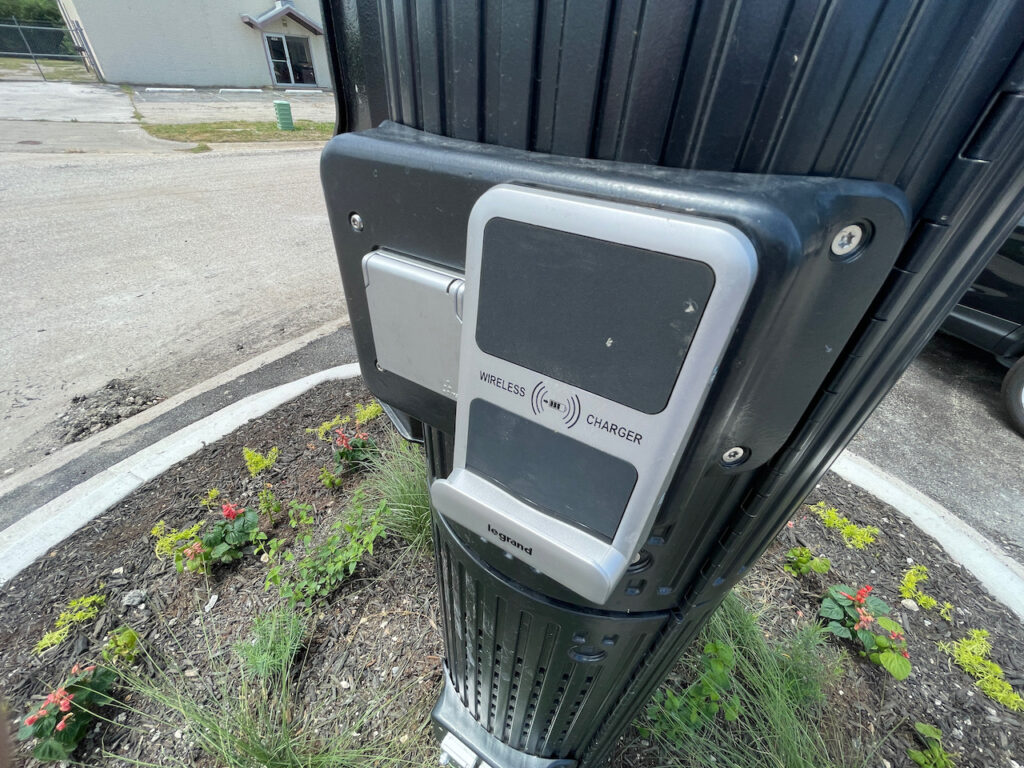
Right now, modules operative on the AmpThink-hosted pole include street lighting, a phone charging station, a car-charging station, convenience outlets, a weather station, a high-performance microphone, security cameras, a wireless access point, and a speaker system.
According to the ENE.HUB product documentation, the poles can also host a wide range of other systems, including air quality monitoring sensors, noise measuring sensors, and ultrasonic detection. The Smart.node can be equipped with a range of lighting and display capabilities. Options include flood lights, warning/flashing lights, and a digital-display panel for wayfinding and other information.
Connecting Fans
At the Super Bowl deployment, the ConcealFab poles were a veritable United Nations of wireless gear. While not every pole hosted every device, according to ConcealFab, their poles housed:
— Ultra wide-band Ericsson radios (mmW)
— CommScope AWS, PCS, and CBRS radios
— JMA canister antennas
— Extreme Networks access points and Wi-Fi antenna
— Leotek LED luminaires, and
— Axis cameras
As fans return to venues from the Covid-19 pandemic closures, they will likely find the need for increased wireless support for digital ticketing and more-complex wayfinding. Smart poles could be part of the solution as venues try to allow guests to connect and be informed well before they are inside the doors. The poles could also potentially be a revenue stream, especially with fee-based services like electric-vehicle charging ports supported by the ENE.HUB Smart.node.
“At this point, we’re just testing what is possible,” said AmpThink’s Anderson.
Editor’s note: This feature is part of our Summer 2021 Stadium Tech Report.






